Bringing an Elektronika MK61 Back to Life
My friend Erik recently sent me a curious and interesting object: a Soviet-made “Elektronika MK61” calculator. Along with the device itself, I received its manual, power adapter, and faux leather case.
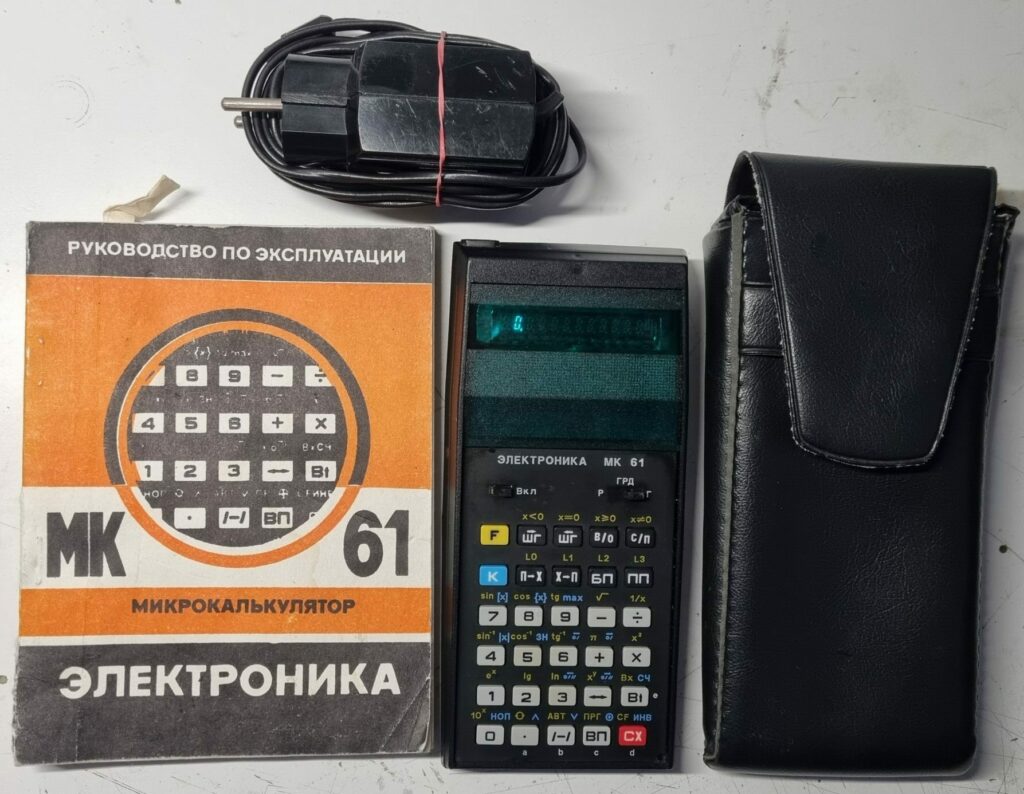
First Impressions
When I first held the calculator, it didn’t feel particularly solid. Attempting to open the battery compartment produced some worrying creaks. However, considering its 1988 production date and country of origin, the overall construction is actually quite good.
Battery Woes
Upon removing the battery cover (no easy task), I discovered that the original batteries had “exploded,” releasing a corrosive substance that had formed a salt-like crust throughout the battery compartment. The original batteries were branded “YPAH-M Element 316,” which I believe translates to “URAN-M Element 316.”
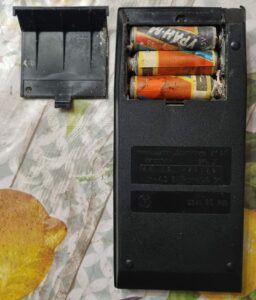
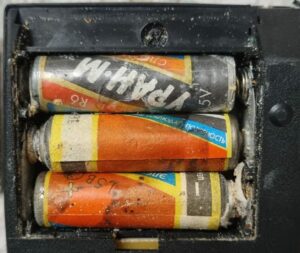
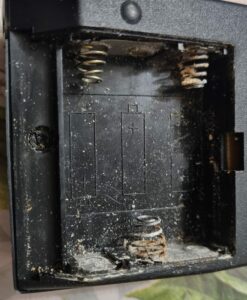
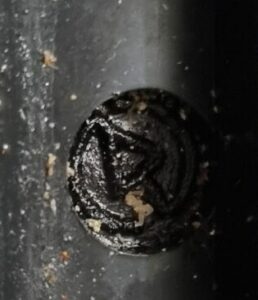
Restoration Process
- I cleaned out all the corrosive residue from the battery compartment.
- The plastic was cleaned with WD40 oil.
- I inserted new AA batteries and tried to power on the calculator, but it remained unresponsive.
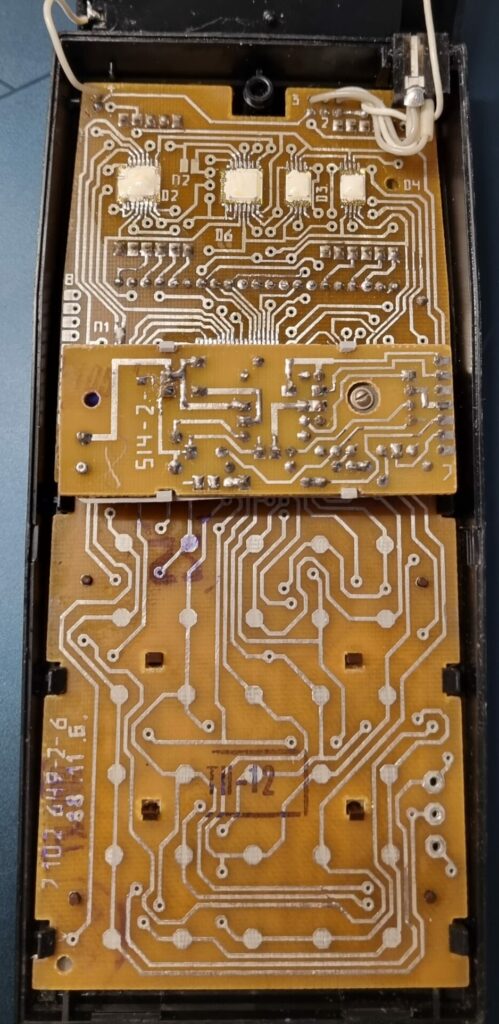
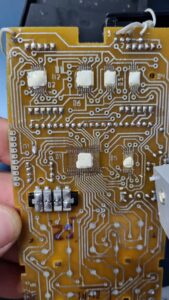
Opening the Calculator
I opened the calculator by removing the single screw in the battery compartment, which was covered with black sealing wax bearing the manufacturer’s logo (serving as a quality seal). Inside, I noticed that the only component that seemed “out of place” was an electrolytic capacitor in the voltage converter module that powers the VFD display. It showed signs of a small electrolyte leak.
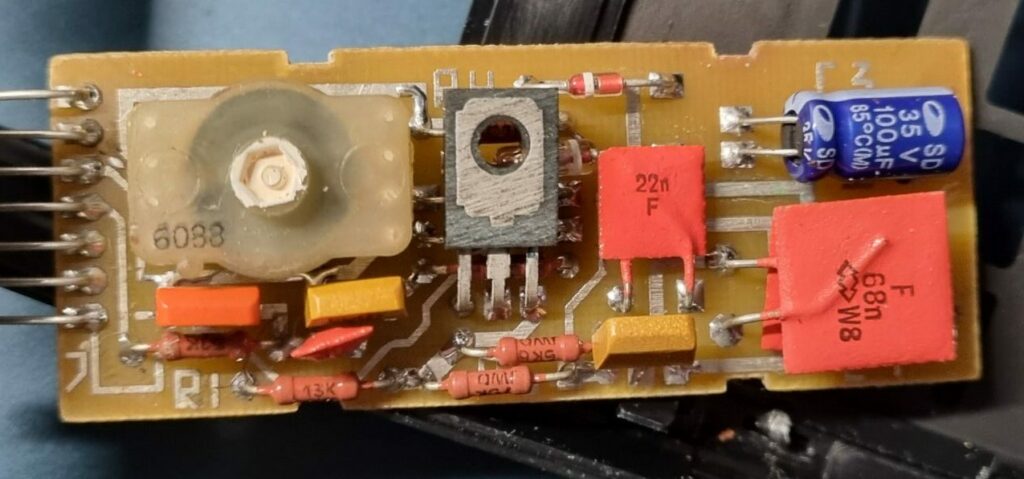
Successful Repair
After replacing the faulty capacitor and reassembling the calculator, it sprang back to life!
Learning to Use an RPN Calculator
Now that the calculator was working, the next challenge was learning how to use it. The Elektronika MK61 is an RPN (Reverse Polish Notation) calculator.
What is RPN and How to Use It
Reverse Polish Notation, also known as postfix notation, is a mathematical notation in which operators follow their operands. This is in contrast to the more common infix notation, where operators are placed between operands.
Here’s how RPN works:
- Enter the first number
- Enter the second number
- Press the operation key
For example, to calculate 3 + 4:
- Press 3, then ENTER
- Press 4
- Press +
The result, 7, will be displayed.
For more complex calculations: To calculate (3 + 4) × 5:
- Press 3, ENTER
- Press 4, +
- Press 5, ×
The result, 35, will be displayed.
RPN eliminates the need for parentheses in complex calculations and reduces the number of keystrokes needed for many operations.
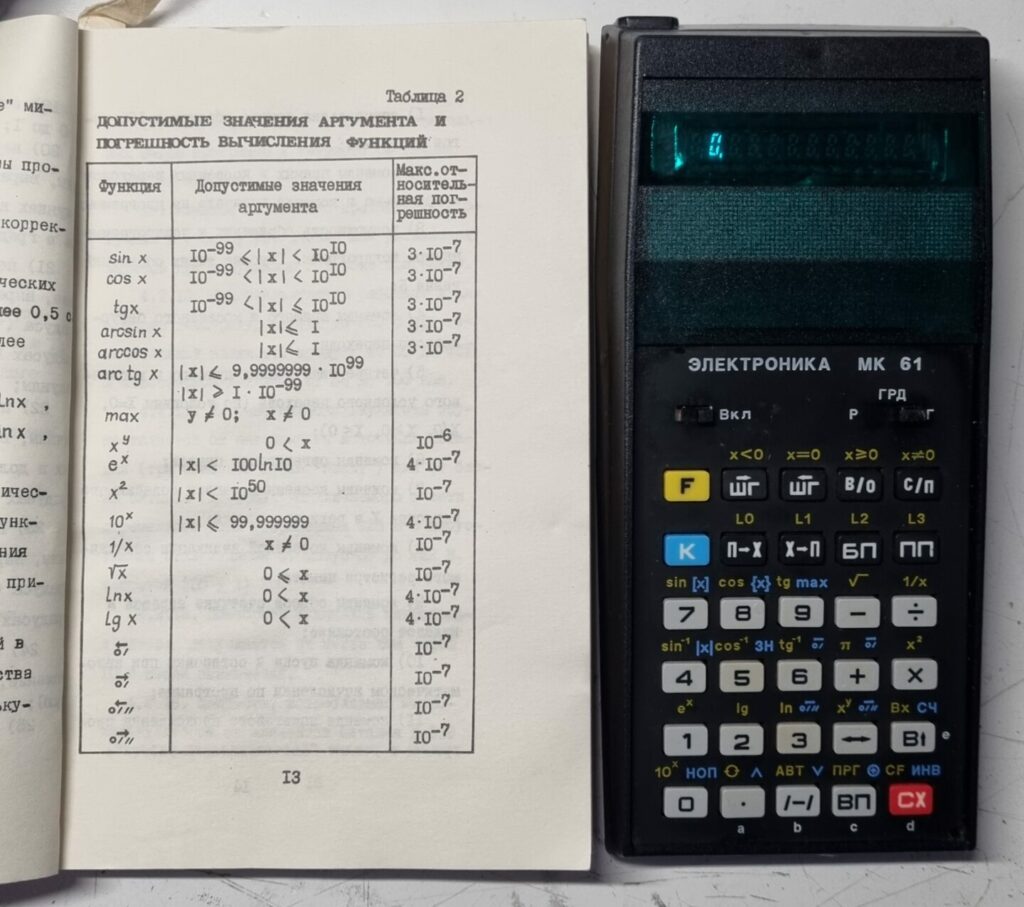
Personal Experience
After learning the basics of RPN, I found that I could perform electronic calculations very quickly without needing to write down intermediate results. This calculator has become a constant companion in my professor’s bag, and I use it regularly in my electronics courses to calculate various exercises on electrical networks and more that I assign to my students.
The Elektronika MK61, despite its age and origin, has proven to be a reliable and efficient tool, adding a touch of history to my daily teaching routine.